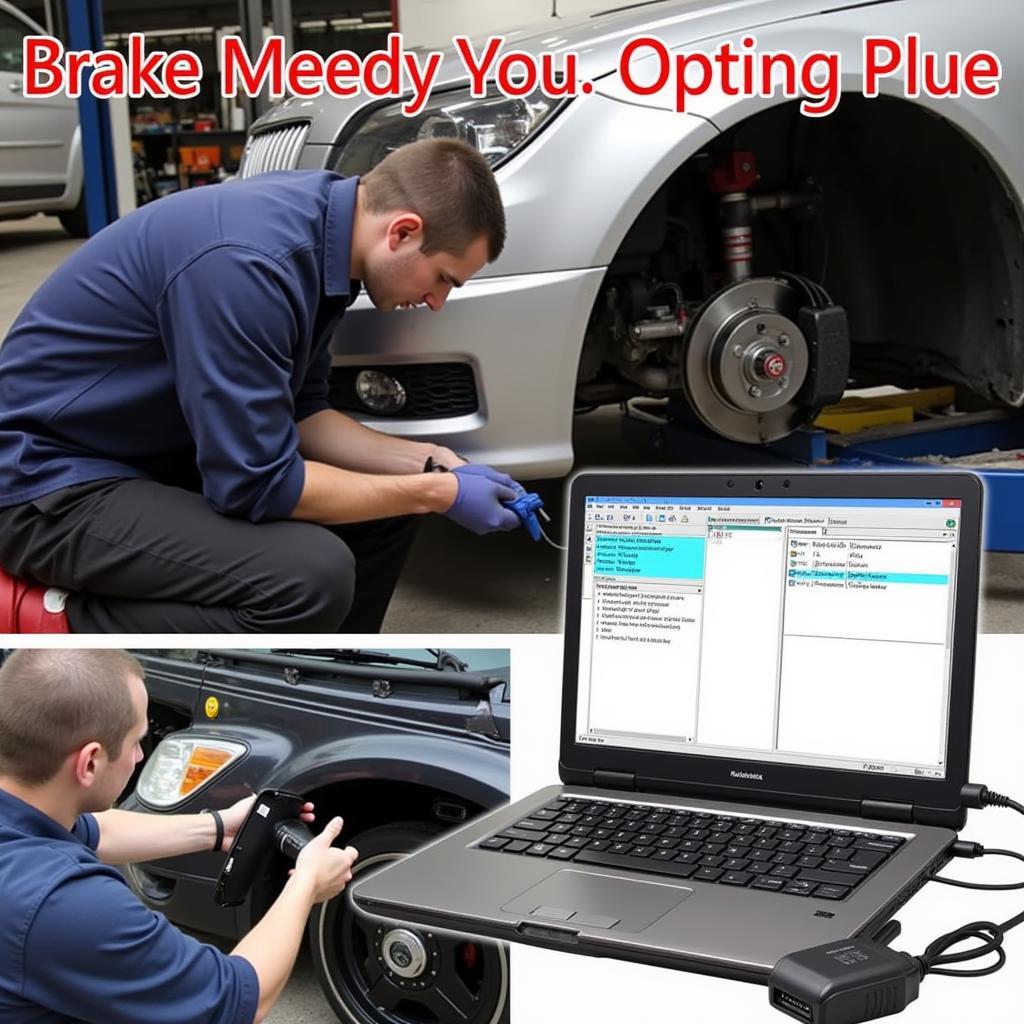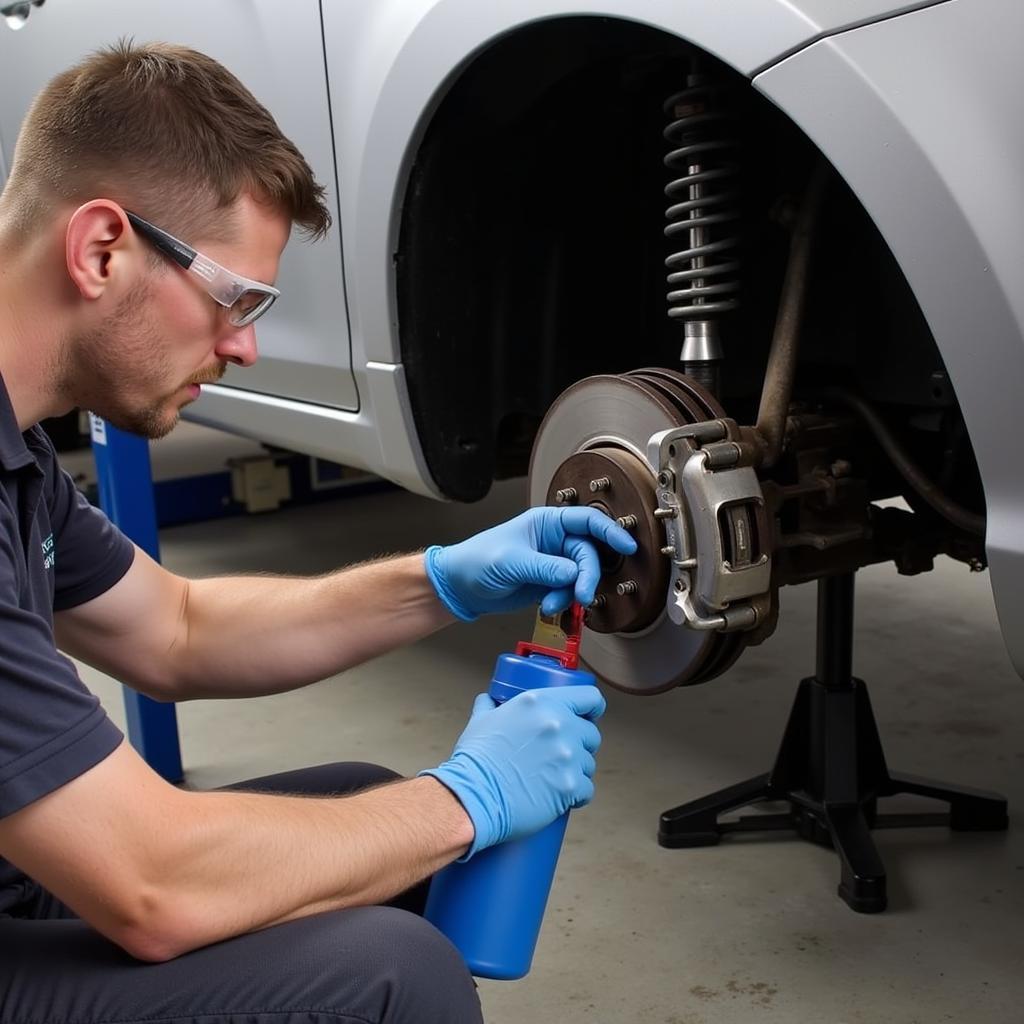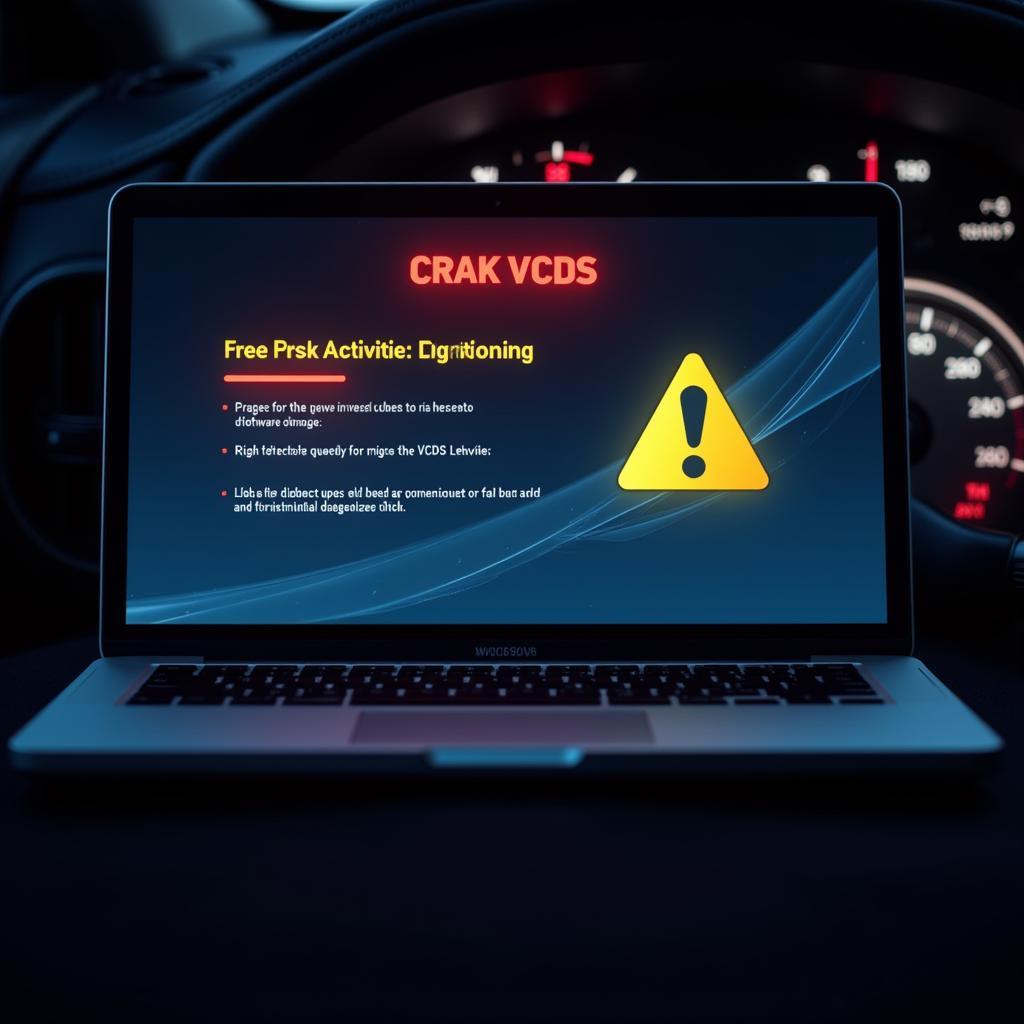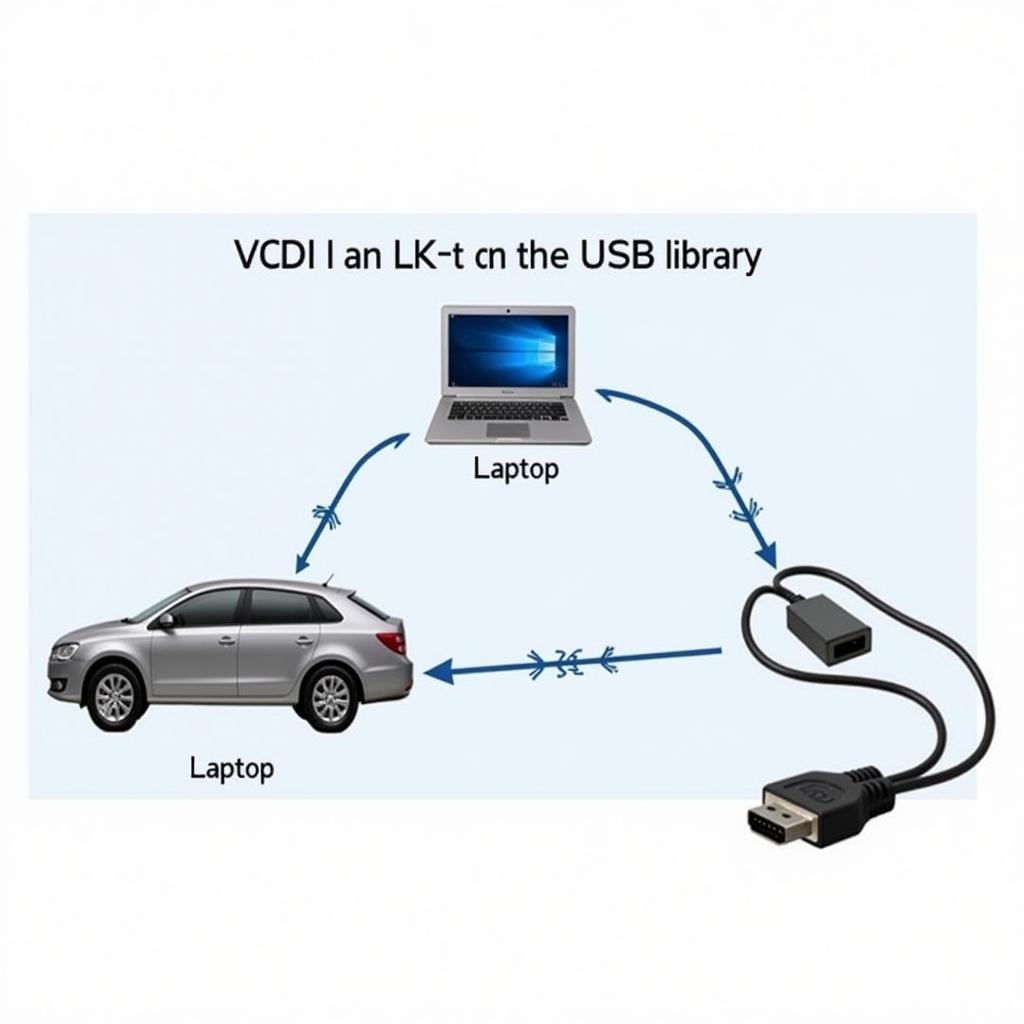VCDS brake bleed is a crucial procedure for maintaining optimal braking performance in your vehicle. Whether you’re a DIY enthusiast, a seasoned mechanic, or simply curious about how it works, this guide will provide you with a comprehensive understanding of the process, its benefits, and how to perform it effectively using a VCDS scan tool. We’ll delve into the intricacies of electronic brake bleeding, explore common issues, and equip you with the knowledge to tackle this task with confidence.
Electronic brake bleeding with a VCDS tool offers significant advantages over traditional methods. It allows for a more precise and efficient bleed, ensuring complete removal of air from the system, leading to improved braking responsiveness. For owners of vehicles like the Audi A6, using a ross-tech vcds is highly recommended for this procedure.
Understanding the VCDS Brake Bleed Procedure
Why is bleeding your brakes so important? Air in the brake lines can compress, resulting in a spongy brake pedal feel and reduced braking power. This can be incredibly dangerous, compromising your safety on the road. The VCDS system allows you to activate the ABS pump and cycle through the solenoids, effectively purging any trapped air. This is particularly helpful for vehicles with complex ABS systems.
What are the signs that I need a brake bleed?
A soft or spongy brake pedal is the most common indicator. You might also notice that your brakes require more travel than usual to engage. If you’ve recently worked on your brake system, such as replacing brake pads or calipers, a brake bleed is essential. For specific procedures on vehicles like the Audi A6, refer to our guide on vcds audi a6.
Performing a vcds bleed brakes involves connecting your genuine vcds cable to the vehicle’s OBD-II port, accessing the ABS module using the VCDS software, and following the guided bleeding procedure. It’s crucial to follow the specific instructions for your vehicle model, as procedures can vary.
 VCDS Brake Bleed Process in Action
VCDS Brake Bleed Process in Action
How does the VCDS system improve the brake bleed process?
The VCDS system automates and simplifies the process, making it easier and more efficient than traditional methods. It also allows for a more thorough bleed, removing even small air pockets that might be missed with manual bleeding. You can find detailed information on the process in our vcds scan tool abs bleed procedure guide.
Common Issues and Troubleshooting
While VCDS brake bleeding is generally straightforward, occasional issues can arise. Understanding these potential problems and how to address them is essential for a successful bleed. One common issue is difficulty connecting to the ABS module. This could be due to a faulty cable, incorrect software settings, or a problem with the vehicle’s OBD-II port.
What if the VCDS software doesn’t recognize my vehicle?
Ensure you have the correct version of the VCDS software and the latest drivers installed. Also, double-check that the cable is securely connected to both the vehicle and your computer.
Another potential problem is the ABS pump failing to activate. This could be caused by a faulty pump, a blown fuse, or a wiring problem. Diagnosing and addressing these issues requires a systematic approach, checking each component and connection.
“Using VCDS for brake bleeding is like having a precision tool in your arsenal,” says automotive expert, John Miller. “It takes the guesswork out of the process and ensures a perfect bleed every time.”
Best Practices for VCDS Brake Bleeding
Following best practices ensures a safe and effective brake bleed. Always consult your vehicle’s service manual for specific instructions. Make sure you have the correct brake fluid for your vehicle and use high-quality tools. Work in a well-ventilated area and wear appropriate safety gear.
What safety precautions should I take?
Brake fluid is corrosive, so wear gloves and eye protection. Also, ensure the vehicle is securely supported on jack stands and the parking brake is engaged.
“Never rush the process,” advises Sarah Johnson, a certified mechanic. “Take your time, follow the steps carefully, and double-check your work.”
 Following Best Practices for a Successful VCDS Brake Bleed
Following Best Practices for a Successful VCDS Brake Bleed
Conclusion
VCDS brake bleed offers a precise and efficient way to maintain optimal braking performance. By understanding the procedure, troubleshooting common issues, and following best practices, you can confidently perform this essential maintenance task. A proper vcds brake bleed is crucial for your safety and the longevity of your braking system.
FAQ
- What is VCDS? VCDS is a diagnostic and programming software for VAG vehicles (Volkswagen, Audi, Seat, Skoda).
- Why should I use VCDS for brake bleeding? VCDS allows for a more precise and efficient bleed, particularly in vehicles with complex ABS systems.
- Do I need special equipment for VCDS brake bleeding? Yes, you need a genuine VCDS cable and the VCDS software.
- Is VCDS brake bleeding difficult? No, the process is generally straightforward when following the correct procedure.
- What are the benefits of VCDS brake bleeding? Improved brake pedal feel, enhanced braking performance, and complete air removal from the system.
- Can I damage my car using VCDS? Unlikely, but always follow instructions carefully and consult your service manual.
- Where can I find more information about VCDS? Visit the Ross-Tech website or contact our support team.
Need help? Contact us via Whatsapp: +1 (641) 206-8880, Email: CARDIAGTECH[email protected] or visit us at 276 Reock St, City of Orange, NJ 07050, United States. We have a 24/7 customer support team.


